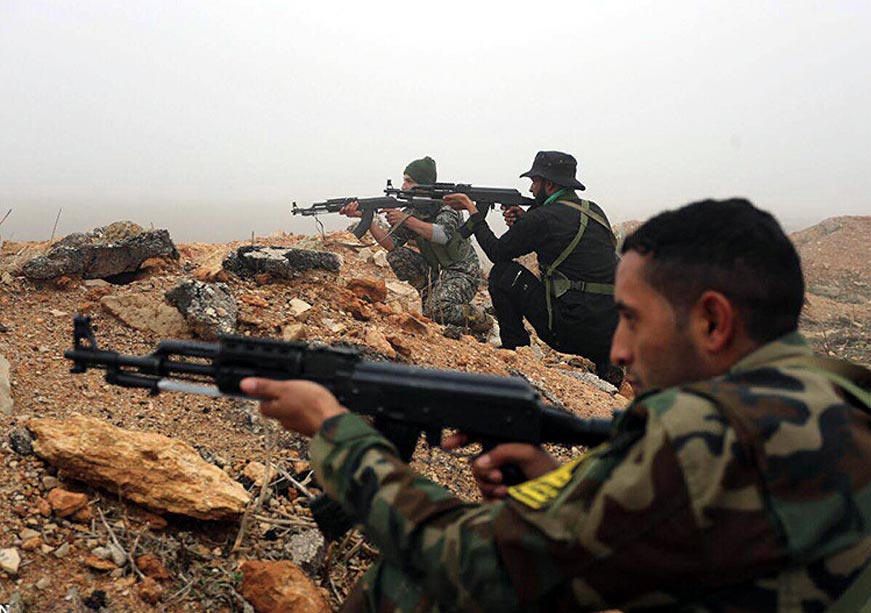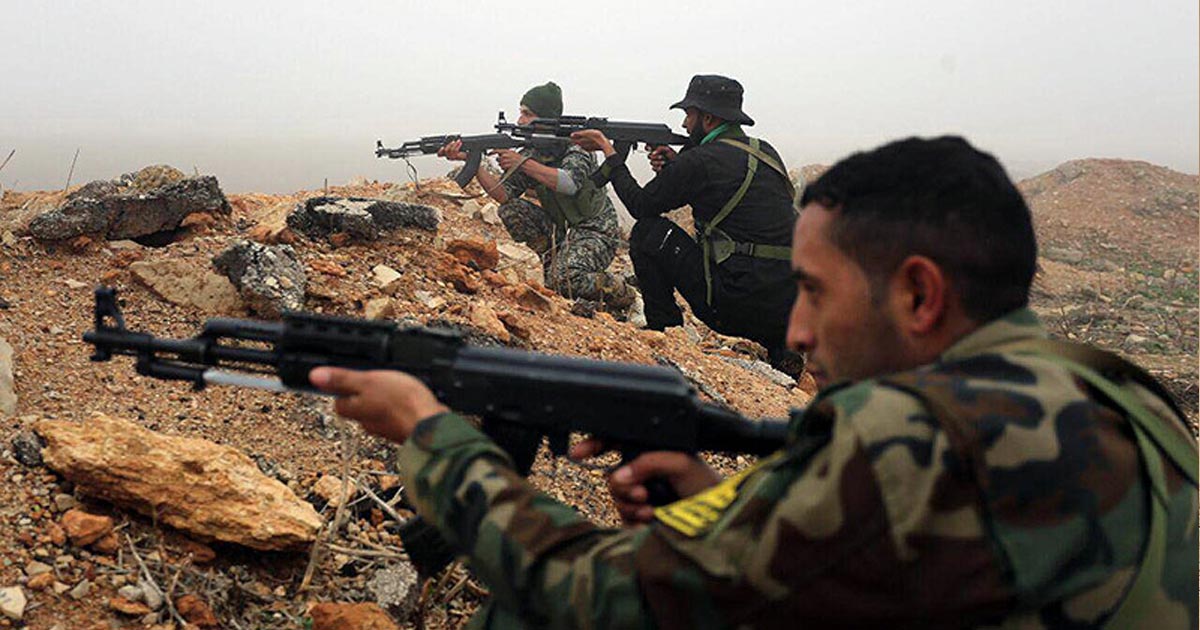
Image Source: Wikipedia Commons
The end of Bashar al-Assad’s nearly three-decade-long hold on Damascus has brought Hay’at Tahrir al-Sham’s (HTS) Ahmed al-Sharaa (formerly known as Abu Mohammed al-Jolani) to the forefront as the new and sole powerbroker in town. The West, along with Arab powers such as Saudi Arabia and the United Arab Emirates (UAE), have backed al-Sharaa and the HTS, with the latter until recently designated as a foreign terrorist organisation by the United States (US). Today, al-Sharaa is being positioned as a harbinger of change for the Syrian people. However, his meteoric rise and the backing he now enjoys have deeper geopolitical connotations than the singular objective of Syrian stability.
Over the past decade, al-Sharaa has become the second leader with a jihadist background to take over a major state. While the US and Europe have, by design, pushed Afghanistan into the annals of their fractious political history, the fact remains that even after nearly 20-years of war that brewed in Afghanistan, Washington and its allies have thus far, only managed to replace the Taliban of Mullah Omar with a newer Taliban of the now in power emir Hibatullah Akhundzada.
Over the past decade, al-Sharaa has become the second leader with a jihadist background to take over a major state.
In Syria, when the Assads capitulated and fled and al-Sharaa entered the fray uncontested, the euphoria which followed served a variety of interests. Primarily, the Syrian people would now be able to witness an end to years of oppression and violence, ironically, by someone who has previously served Al-Qaeda. This, for the moment, is bearing out. The second, and perhaps the heftier play, was the exit of Iran and Russia from this theatre, who collectively constituted the spine keeping Assad levelled/propped up throughout the protracted civil war. Now, Syria’s new Foreign Minister, Asaad al-Shaibani, has travelled to Moscow to meet his counterpart Sergei Lavrov. The meeting also includes a rare audience in the form of Russia’s President Vladimir Putin. This exchange suggests that the Kremlin is not done with the country just yet. Al-Sharaa, much like everyone else, will have to manage Syria in a way that prevents it from becoming fertile ground for great power competition and spares it the fate of neighbouring Iraq, long caught in a power-struggle between Iranian and American interests. An outreach to Moscow may be part of such a trellis, and it is plausible that deeper political contact with Iran may also be imminent.
Nonetheless, the new Syrian dispensation has prompted the Taliban to look to it for inspiration, even as they reject its model of governance. In August 2021, HTS cadres were on the streets of Idlib, waving the Taliban flag and celebrating their victory over the US. The official statement from HTS read: “With utmost joy and delight we received the news of the conquests of our people in Afghanistan, and their land’s obtaining of freedom from the occupation and its agents at the hands of the Taliban- may God make their path right and aid them- so congratulations to the people of the Afghans for this clear conquest and great victory.” The statement further added that the Syrian resistance took inspiration from such examples of “resistance and jihad”.
Since then, the Taliban in Afghanistan has survived and pursued global outreach without conceding ground, despite the twin pressures of external forces and internal tensions between the movement’s ideological core in Kandahar under Akhundzada and the political class in Kabul. This class, led by the notorious Haqqani Network of Sirajuddin Haqqani—the country’s powerful Acting Minister of Interior Affairs—is perceived to be more ‘pragmatic’. According to recent available studies, the Taliban has publicly announced 1,382 diplomatic engagements with 80 countries between 2021 and 2024. China led the largest number of such engagements, cementing itself as a core geopolitical anchor for the Taliban regime, followed by Iran and Türkiye. In comparison, Syria under al-Sharaa has conducted more than 1,500 publicly acknowledged diplomatic engagements to date, with Türkiye and Qatar leading in bilateral engagements.
The Taliban has publicly announced 1,382 diplomatic engagements with 80 countries between 2021 and 2024. China led the largest number of such engagements, cementing itself as a core geopolitical anchor for the Taliban regime, followed by Iran and Türkiye.
Although the Taliban’s regional approach in dealing with its neighbours has been difficult, it has also proven to be fruitful/lucrative. States in Central Asia decided not to be confrontational, instead opting to economically engage the Taliban in exchange for the security of their borders and ethnic minorities not being overtly targeted by the group’s largely Pashtun construct. The other two borders of Afghanistan remain much more challenging. The Taliban has a fragmented relationship with Pakistan, a country which has served as its ideological home and strategic patron. Under Taliban rule, Kabul has inherited Afghanistan’s long-standing border dispute with Islamabad over the Durand Line, rooted in both history and geography. Ironically, Pakistan arguably had better security on its borders under the governments of Hamid Karzai and Ashraf Ghani than their creations, who are now in charge in Kabul. The Afghan Taliban’s apprehension to rein in the Tehrik-e-Taliban Pakistan (TTP) due to the role they played as part of their resistance and its current campaign of terror inside Pakistan has brought tensions to a precipice.
On its Western borders, the Taliban has Iran, a country which does not support them ideologically or politically but is pragmatic enough to see their relevance. Iran has long forged a functional relationship with the Taliban following the September 2001 terror attacks, America’s invasion of the country as a response, and being clubbed into the ‘Axis of Evil’ by then US President George W Bush in January 2002. Today, Tehran looks upon the exit of US military power from Afghanistan as a significant boon, having to not worry about Western militarisation on its eastern flank as tensions with Israel peak.
On the international front as well, the Taliban has maintained as much contact as others would allow it. Haqqanis have managed to keep Akhundzada and his Kandahar-based cohort relatively isolated from their foreign policy and have leveraged offering security, including fighting the Islamic State Khorasan (also known as ISKP, Islamic State’s offshoot in the Afghanistan-Pakistan border regions since 2015) and keeping the likes of Al Qaeda and other similar entities under their thumb, as deliverables to China, Russia, US, and Europe alike. Today, while international recognition remains elusive, both Beijing and Moscow host Taliban-nominated ambassadors. Others in the Islamic world, hesitantly, are also forging a similar path, recognising the Taliban interim government more in practice but not on paper yet. For example, the UAE accepted a Taliban-appointed ambassador in 2023. However, during Mawlawi Badruddin Haqqani’s swearing-in ceremony in Abu Dhabi, the Taliban flag was disallowed from being placed in the background.
Both will work overtime to ensure that a 9/11-like event does not set them back to square one. The Taliban has managed this for nearly half a decade; whether Al Sharaa can do the same remains uncertain.
Compared to the Taliban, al-Sharaa has had it relatively easier despite its increasing friction with Israel. Support from the Arabs and the West made not just access to international institutions fluid, but also paved the way for recognition almost automatically from multiple quarters. His meeting with US President Donald Trump in Riyadh was a cornerstone moment. By December 2024, the new Syrian flag was already flying in Washington, D.C., European leaders arrived in Damascus in rapid succession, and Arab states such as Saudi Arabia announced billions of dollars in economic aid aimed towards reconstruction and stability. Al-Sharaa’s crisp three-piece Western suit became the norm compared to the military fatigues he had worn as Al Jolani. However, it is in all likelihood improbable that his attempt at governance will succeed without calculating his relations with Russia, Iran, and China, the three countries pitched as part of the ‘Axis of Upheaval’ from a Western point of view.
The recent sectarian violence, which enveloped Syria, impacting minority ethnic groups such as the Druze and Alawites, is similar to the challenges faced by the Taliban to try and integrate ethnic groups such as the Uzbeks, Tajiks, and most importantly Shia Hazaras. With the Hazaras, the Taliban employed old-school realpolitik, where it offered sanctity of borders to Tehran and looked to minimise refugee flows, including the Shias. The recent deportation of over a million Afghan refugees from Iran as a fallout of the ‘12-day war’ with Israel is a case in point. The deportations are also based on the back of claims that some Afghans were acting as spies for Israel. For now, this exchange between Afghanistan and Iran has not flared up into an overt political crisis between the two nations.
Al-Sharaa has had a better bet than the Taliban on how to ease an insurgency into a presidency. However, the new Syrian leadership has far more regional and international support than the Taliban will ever get. Nonetheless, the Taliban has a blueprint of global engagement that works just enough to keep it afloat. Al-Sharaa and Akhundzada benefit from a collapsing post-World War II international order and war fatigue in Western capitals. Both will work overtime to ensure that a 9/11-like event does not set them back to square one. The Taliban has managed this for nearly half a decade; whether Al Sharaa can do the same remains uncertain.
Kabir Taneja is a Deputy Director and Fellow with the Strategic Studies programme at the Observer Research Foundation.
The views expressed above belong to the author(s). ORF research and analyses now available on Telegram! Click here to access our curated content — blogs, longforms and interviews.
